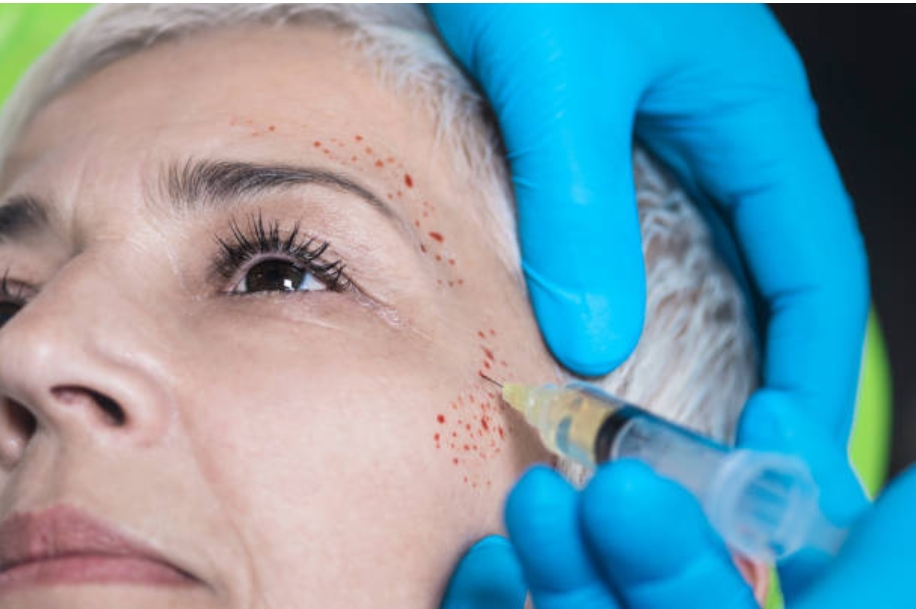Dark circles under the eyes are a common cosmetic concern that can affect individuals of all ages and backgrounds. While various factors contribute to the development of dark circles, such as genetics, lack of sleep, and aging, finding effective treatments has been a longstanding challenge. Platelet-Rich Plasma (PRP) therapy, a regenerative medicine approach, has gained attention as a potential solution to diminish under-eye dark circles.
In this article, we will delve into the science behind PRP, its application in under-eye treatments, and the existing evidence supporting its efficacy in reducing dark circles.
Understanding Platelet-Rich Plasma (PRP)
Under eye PRP injections refers to a concentration of platelets derived from the patient’s own blood. Platelets are rich in growth factors and other bioactive substances that play a crucial role in tissue repair and regeneration. The process of obtaining PRP involves drawing a small amount of the patient’s blood, processing it to separate the platelets, and then injecting the concentrated platelets back into the target area.
The Mechanism of Action
To comprehend how under eye PRP injections may reduce under-eye dark circles, it is essential to understand its mechanism of action. The growth factors in PRP stimulate collagen production, enhance blood flow, and promote tissue regeneration. In the context of under-eye dark circles, these effects can address some of the underlying causes.
- Collagen Production: Collagen is a structural protein that provides firmness and elasticity to the skin. Aging and various environmental factors can lead to collagen degradation, contributing to the thinning of the under-eye skin and the appearance of dark circles. PRP injections stimulate the production of collagen, potentially improving skin thickness and texture.
- Improved Blood Flow: Poor circulation around the eyes can exacerbate the appearance of dark circles. PRP’s ability to enhance blood flow can mitigate this issue by promoting better oxygenation and nutrient delivery to the under-eye area.
- Tissue Regeneration: Dark circles can result from the breakdown of delicate blood vessels and tissues beneath the eyes. PRP’s regenerative properties may aid in repairing and revitalizing these tissues, reducing the prominence of dark circles.
Clinical Evidence
While the concept of using PRP to treat under-eye dark circles is promising, it is crucial to evaluate the existing clinical evidence to determine its efficacy. Research in this specific area lacks sufficient evidence, and researchers need to conduct more studies to establish conclusive results.
A study published in the Journal of Cosmetic Dermatology in 2016 explored the effectiveness of PRP in treating infraorbital dark circles. The study involved a small sample size, and participants received PRP injections over three sessions. The results suggested a visible improvement in dark circle severity, accompanied by increased skin hydration and elasticity.
However, it is essential to note that larger, well-controlled studies are required to confirm these findings and establish the optimal treatment protocols. The variability in individual responses, potential placebo effects, and the need for standardized assessment methods contribute to the complexity of evaluating PRP’s efficacy for under-eye dark circles.
Considerations and Risks
Before undergoing any cosmetic procedure, it is crucial for individuals to be aware of potential considerations and risks associated with the treatment. In the case of under-eye PRP injections, factors such as the patient’s overall health, skin type, and medical history play a role in determining candidacy for the procedure.
Additionally, while PRP is derived from the patient’s own blood, there is still a risk of infection, bruising, or swelling at the injection site. It is essential for individuals to consult with a qualified and experienced healthcare professional to assess the suitability of PRP for their specific concerns and to ensure the procedure is performed safely.
Conclusion
Under-eye dark circles can be a persistent cosmetic concern, and individuals often seek effective and non-invasive solutions for their management. PRP therapy, with its regenerative properties, has emerged as a potential option to address the underlying causes of dark circles. While early studies show promise, further research with larger sample sizes and standardized protocols is necessary to establish the efficacy of under-eye PRP injections definitively.
As with any cosmetic procedure, individuals considering PRP for under-eye dark circles should engage in thorough discussions with their healthcare provider, weighing the potential benefits against the risks. The evolving landscape of aesthetic medicine continues to explore innovative approaches, and PRP therapy stands as a hopeful contender in the quest for a rejuvenated and refreshed under-eye appearance.




